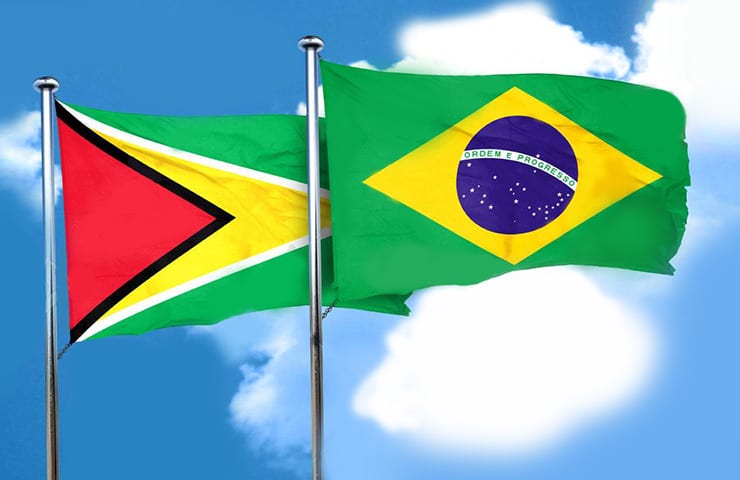South American oil giant, Brazil, and Guyana, the world’s hottest exploration hotspot with an incredible string of discoveries in the Stabroek Block, are poised to deepen their bilateral relations.

Towards this end, Guyana’s President, Dr. Irfaan Ali held a teleconference on Monday with his counterpart President of the Federative Republic of Brazil, Jair Bolsonaro, to discuss his visit to Georgetown by month end along with the issues that would inform the agenda.
President Ali listed several areas that are critical for both countries to move their relationship forward, including energy and food security, telecommunication, infrastructure integration and trade.
He also pointed out that due to their geographical locations, the nations must make strong statements in linking their territories.
The Guyanese Head of State said that in addition to oil and gas, expanding opportunities in the other non-oil natural resources sectors such as bauxite will create an opportunity for a direct link to northern Brazil and the Atlantic that can “create an excellent platform for us to develop an integrated project”.
As it relates to trade, currently, there is an existing partial scope agreement that aims to foster bilateral trade flows by the exchange of tariff preferences between the two countries, cooperation on trade matters and increased participation of the private sector. This, President Ali said, is currently under negotiation to be expanded since Guyana wants to increase its quota, especially as it relates to rice being exported to Brazil.
President Bolsonaro said the agenda for discussion looks “very promising” and that he will ensure technical staff from the relevant ministries in Brazil travel for the state visit.
As for President Ali, he was keen to note that Guyana wants to have a “very strong strategic partnership” with Brazil, South America’s biggest oil producer.
Senior Minister within the Office of the President with responsibility for Finance, Dr Ashni Singh; Minister of Foreign Affairs and International Cooperation, Hugh Todd; Foreign Secretary, Robert Persaud and Permanent Secretary of the Ministry of Foreign Affairs and International Cooperation, Ambassador Elisabeth Harper were also at the Office of the President in Georgetown for the teleconference.
Brazil has been involved in the petroleum industry since the 1940s and holds the second-largest oil reserves in the continent after Venezuela.
Furthermore, it is the most important oil and gas producer in the region and the world’s largest ethanol fuel producer.
Petrobras is the main participant in Brazil’s upstream, midstream, and downstream oil sector activities. The company held a monopoly on oil-related activities in Brazil until 1997, when the government opened the sector to competition. Within the last two years, Petrobras has significantly increased the number of production vessels operating in its pre-salt fields to boost crude oil production. (Pre-salt oil refers to oil reserves that are exceptionally deep below the ocean under thick layers of rock and salt. The great depth and pressure involved in pre-salt production present significant technical hurdles.)
As for Guyana which has made more than 20 major discoveries in the Stabroek Block since 2015, industry experts have deemed its oil to be one of the best the world has seen in the last decade given its high quality and low breakeven cost for deepwater projects.
Oil production commenced in Guyana in 2019 at the Liza Phase One Project and Liza Phase Two is on track to come on stream this quarter. By 2026, Guyana’s oil projects following optimization programmes, could push production rates to well over 900,000 barrels of oil per day.
To date, the ExxonMobil-led consortium at the Stabroek Block has discovered 10 billion barrels of oil equivalent and sees multi-billion-barrel potential left to be explored.
PUBLICADO POR: OIL NOW











Deixe um comentário